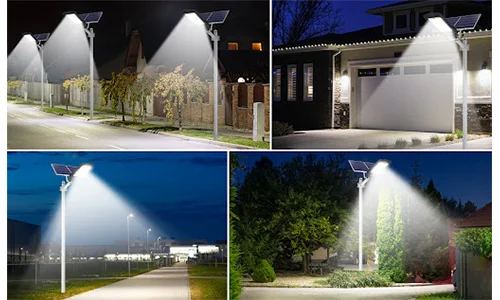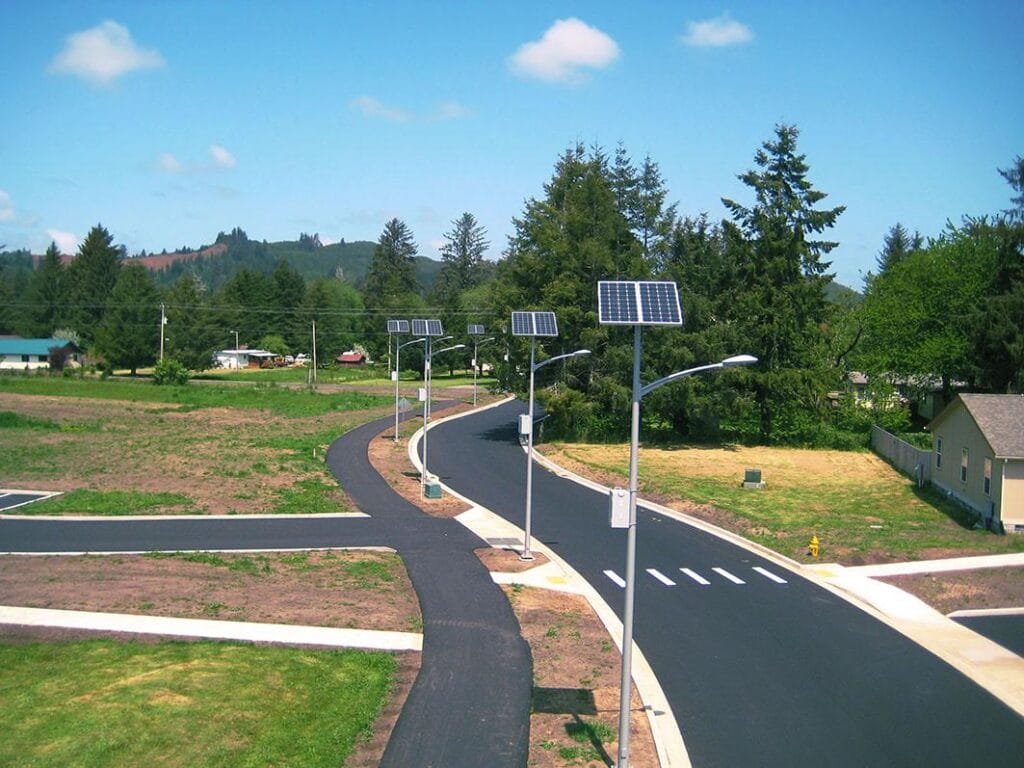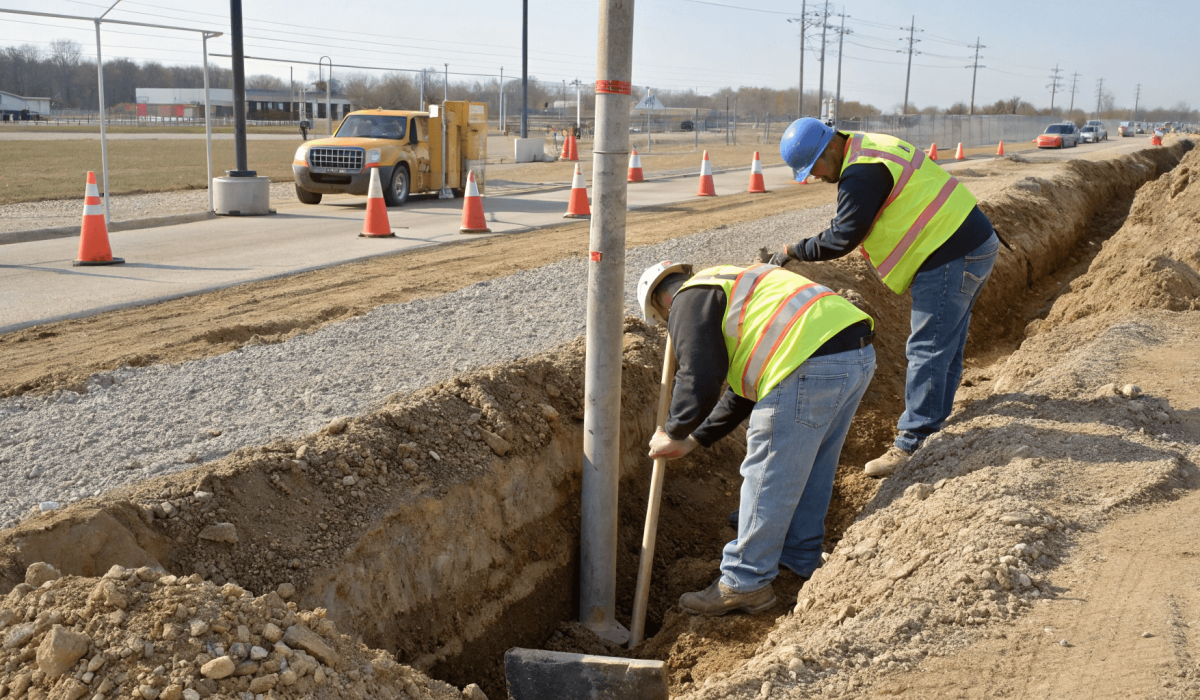I’m Nathi Moyo, a public infrastructure consultant based in South Africa. Over the past 15 years, I’ve worked on urban lighting projects across the continent—from Cape Town CBD’s pedestrian corridors, to eThekwini’s township upgrades, and the Lusaka Safe Streets initiative.
These weren’t just spec-sheet exercises. I’ve seen how the right lighting placement can help a child walk home safely, how one poorly placed light can leave an entire park empty after dusk—and how smart urban design can genuinely reduce crime and activate city life after dark.
In this article, I’ll walk you through exactly how urban lighting can improve public safety—drawing from experience, data, and practical design insights for real-world implementation.
Why Is Urban Lighting Critical for Safety?
Good lighting does more than illuminate. It transforms how people move, behave, and interact in public spaces at night.

Whether you’re walking alone on a residential footpath or arriving at a bus terminal after hours, proper lighting can mean the difference between comfort and fear.
Urban lighting boosts safety in three main ways:
- Prevents crime by improving visibility and natural surveillancee](https://www.everettwa.gov/1082/Crime-Prevention-Through-Environmental-D)
- Reduces accidents for both pedestrians and vehicles
- Encourages positive nighttime activity, keeping streets alive and well-used
How Does Urban Lighting Improve Safety at Night?
What Role Does Lighting Play in Crime Prevention?
I’ve seen how just one extra light near a playground can change how families use a space after 7 p.m.
Well-lit environments remove hiding places and increase passive surveillance. It’s not just about brightness—it’s about placing light where people need to see and be seen.
According to the Campbell Collaboration’s 2019 review, upgraded lighting reduced crime rates by up to 21% in treated areas.
How Does Lighting Help People Move Safely?
In poorly lit transit hubs, I’ve seen camera footage rendered useless—until we added vertical, face-level LED lighting.
Lighting improves depth perception, facial recognition, and navigation confidence—all of which reduce accident risk and hesitation in unfamiliar spaces.
Key movement zones to prioritize:
- Intersections
- Sidewalks and footpaths
- Transit stops and entrances
- Pedestrian crossings
How Can Lighting Make Public Spaces Feel Safer After Dark?
Lighting encourages presence—and presence discourages crime.
In Durban’s North Beach area, a 2021 post-installation lighting audit showed a 26% increase in evening foot traffic, with more vendors staying open later and more families occupying beachfront parks after sunset.
What Are the Key Principles of Safe Urban Lighting?

Which Urban Areas Should Be Prioritized?
| Area Type | Recommended Lighting Approach |
|---|---|
| Walkways | Low-level, uniform LED lighting |
| Entrances | Vertical lighting for face visibility |
| Parks | Balanced ambient illumination |
| Intersections | Multi-directional, glare-free setups |
How Can Cities Ensure Consistent, Safe Lighting Levels?
Avoid dark-light-dark transitions that create shadow pockets.
Smart systems can adjust brightness based on pedestrian or vehicle flow, using motion sensors and scheduling tools to provide consistent, context-aware lighting.
What Type of Lighting Is Most Energy Efficient?
LEDs offer 60–80% energy savings over legacy systems, with longer lifespans and better light quality.
Warm color temperatures (around 2700K–3000K) are preferred for safety and comfort, as they reduce glare, support facial visibility, and minimize ecological disruption.
What Smart Technologies Improve Lighting Safety?
How Do Smart Lighting Systems Work?
| Feature | Safety Benefit |
|---|---|
| Motion Sensors | Activates light only when needed |
| Adaptive Brightness | Adjusts to traffic and time of day |
| Remote Monitoring | Identifies outages for fast repair |
| Network Integration | Links lighting to safety infrastructure |
Example: In Toledo, Ohio, smart streetlight implementation helped reduce nighttime traffic incidents by 30%, according to a 2022 Urban Mobility Authority report.
What Design Elements Help Prevent Vandalism?
- Install poles at 3.5–4 meters height to prevent tampering
- Use anti-theft fixtures and tamper-proof fasteners
- Choose corrosion-resistant materials for long-term durability
How Does Urban Lighting Prevent Crime?

| Location | Lighting Solution | Safety Outcome |
|---|---|---|
| Apartment Entrances | Focused face-level light | Improved ID and deterrence |
| Parking Lots | Wide-beam uniform LEDs | Fewer hiding spots |
| Transit Platforms | Overhead + wall lighting | Better visibility, easier monitoring |
Even, layered lighting discourages loitering and makes escape routes visible—key elements in urban crime prevention strategy.
How Can Cities Improve Nighttime Navigation?
- Ensure clear sightlines at intersections
- Add bollard lights for walkways and crossings
- Use color cues and beam direction to guide pedestrians and cyclists
Quick Tip: Avoid high-intensity white lights near residential areas—they increase glare and disrupt night adaptation.
What Makes a Public Space Feel Safe After Dark?
It’s not just brightness—it’s ambiance.
People stay longer in spaces where lighting feels intentional, warm, and human-centered.
Good lighting supports:
- Evening markets
- Family gatherings
- Cafés and small business hours
- Public transit use after sunset
Poorly lit spaces, no matter how beautiful by day, are quickly abandoned at night.
What Are Some Real-World Examples of Safe Urban Lighting?
Successful Implementations
- Lusaka, Zambia: LED upgrades cut power consumption by 40% while improving night surveillance
- Cape Town CBD: Pole-mounted sensors enabled real-time outage reporting across over 500 blocks
- eThekwini’s informal settlements: Solar bollards created safe walking corridors between schools and homes
Practical Design Tips
- Use shielded fixtures to prevent upward light pollution
- Combine motion sensors + timers + overrides
- Build redundancy into pole spacing
- Plan for modular retrofits as city layouts evolve
- Choose materials and coatings suited to coastal or dusty climates
How Does Lighting Fit into CPTED (Crime Prevention Through Environmental Design)?
Lighting is central to CPTED—an urban design framework that reduces crime through environmental cues.

Lighting supports CPTED in three ways:
- Natural surveillance: Visibility empowers people to watch and be watched
- Territorial reinforcement: Lit spaces feel owned, respected, and cared for
- Access control: Strategic lighting subtly guides movement and limits misuse
CPTED isn’t just theory. It’s how we build cities that don’t just function at night—but thrive.
Conclusion: Why Lighting Is the Frontline of Urban Safety
Lighting affects how we see, how we move, and how we feel. It’s foundational—not cosmetic.
From township walkways to downtown districts, I’ve seen how thoughtful lighting design can:
- Lower crime rates
- Prevent accidents
- Strengthen communities
- And extend economic life after dark
It starts with one question: Are we designing for visibility—or for people?
FAQs
How does lighting reduce crime in urban areas?
By increasing visibility, removing concealment zones, and supporting natural surveillance, lighting discourages criminal activity and improves response time.
What are the best lighting strategies for walkways?
Use shielded, low-mounted LED lights that provide uniform coverage without glare. Aim for 3000K or warmer to enhance comfort and reduce light pollution.
How do smart streetlights improve city safety?
Smart systems activate light based on motion, detect outages remotely, and adjust brightness depending on foot or vehicle traffic—ensuring safety without wasting energy.
What is CPTED lighting design?
CPTED lighting design places fixtures to enhance surveillance, reinforce territorial cues, and guide safe behavior through environmental cues, rather than force.
Which LED color temperatures are best for public safety?
Warm white (2700K–3000K) is ideal—it improves visibility, supports facial recognition, and reduces discomfort compared to harsh blue-white light.
How much can cities save by switching to smart lighting systems?
Savings vary, but many cities report 40–60% reductions in energy costs, along with significant decreases in maintenance expenses due to remote monitoring.
Download our Safe Lighting Audit Template for Urban Planners (PDF)
Request a Free Lighting Design Review →


